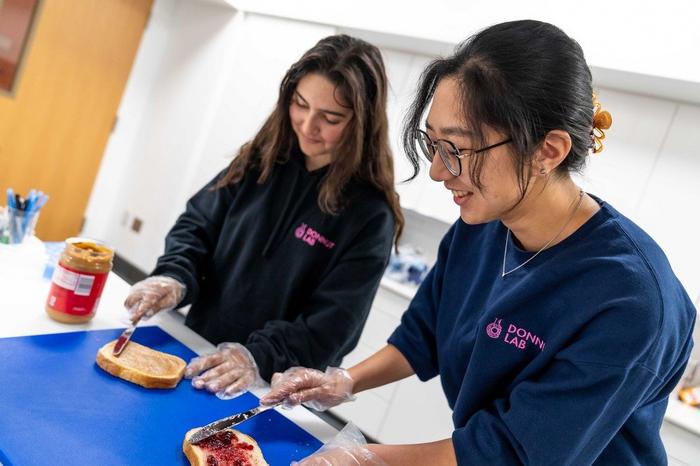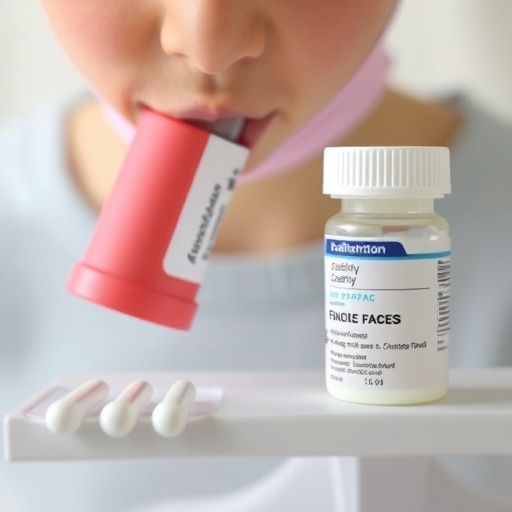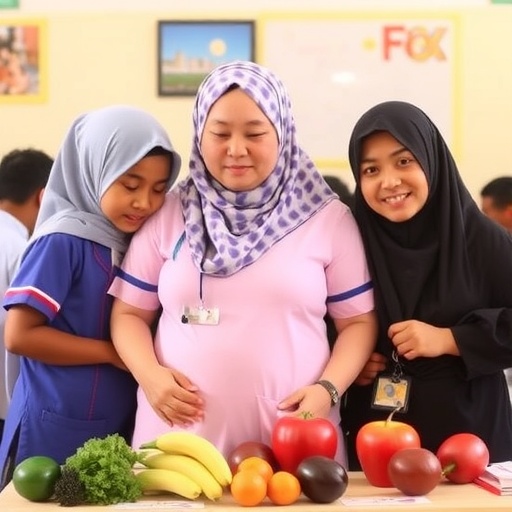Fralin Biomedical Research Institute at VTC scientists studying ultra-processed foods have created a new tool for assessing the rewarding and reinforcing properties of foods that make up 58 percent of calories consumed in the United States. The foods have been linked to a wide range of negative health outcomes.

Credit: Clayton Metz/Virginia Tech
Fralin Biomedical Research Institute at VTC scientists studying ultra-processed foods have created a new tool for assessing the rewarding and reinforcing properties of foods that make up 58 percent of calories consumed in the United States. The foods have been linked to a wide range of negative health outcomes.
The research, which was published in April in the journal Appetite, provides a collection of carefully curated images of minimally processed and ultra-processed foods matched on 26 characteristics, including macronutrients, sodium, dietary fiber, calories, price, and visual characteristics such as a color and portion size.
The work was based on the NOVA classification system — “nova” means new in Portuguese — which groups foods into four categories based on their level of processing. Nutrition researchers at the University of São Paulo in Brazil developed the scale while studying the country’s sharp increase in obesity rates.
The scale has its detractors.
“A major criticism of the NOVA scale is that it’s difficult to use or that foods are classified differently by different people,” said Alexandra DiFeliceantonio, corresponding author and assistant professor at the Fralin Biomedical Research Institute. “We found that people with education in nutrition generally agreed on the food classifications, providing some data that it might not be a valid criticism.”
What they did
The NOVA system assigns food to four categories: unprocessed or minimally processed, such as fresh fruit, legumes, or plain yogurt; processed culinary ingredients, such as cooking oils, butter, and salt; processed foods, which combine the two above through simple methods suc as cheese, canned vegetables, or freshly baked bread; and ultra-processed foods, such as soft drinks, flavored yogurt, processed meat, and most packaged breads, made through industrial processing and additives rarely found in a home pantry.
To develop the picture set, a team of psychologists, neuroscientists, and registered dietitians selected foods to represent either minimally processed or ultra-processed foods.
The foods were prepared in a lab, visually represented through professional photography, and controlled for consistency. Researchers also gathered price, food weights, and nutritional information – calories, macronutrients, sodium, and dietary fiber – for the food in each image.
Study participants rated images across a range of qualities to generate a final set of 28 pictures matched across 26 characteristics. To objectively measure NOVA classification, researchers recruited 67 nutrition professionals and asked them to classify the foods as minimally or ultra-processed.
“With this food picture set we can start to infer that any differences between food pictures is due to the degree of food processing, and not all these other factors that we know are potentially impactful,” said Zach Hutelin, the study’s lead author and a Fralin Biomedical Research Institute-based graduate student in the translational biology, medicine and health Ph.D. program.
Why this matters
Ultra-processed foods are linked with increased risk of developing obesity, Type 2 diabetes, heart disease, and cancer. They represent more than half of calories consumed in the United States, Canada, and the United Kingdom and have been identified as a global threat to public health.
“There is very little experimental research on ultra-processed foods, and part of what’s been holding us back is better tools for measuring and assessing their effects,” said DiFeliceantonio, who is also associate director of the Fralin Biomedical Research Institute’s Center for Health Behaviors Research. “The more tools we can provide, the more we can learn.”
The Virginia Tech team is making the pictures and associated data accessible through the Virginia Tech Data Repository of the Virginia Tech University Libraries. This will allow scientists to test hypotheses in behavioral economic and neuroimaging studies.
In the DiFeliceantonio lab, the photos are being used with functional MRI to reveal associated brain activity, with the images isolating the effects of food processing from other characteristics.
The study was funded by a National Science Foundation graduate research fellowship, the National Institute of Diabetes and Digestive and Kidney Diseases of the National Institutes of Health, and a grant from the Seale Innovation Fund, which supports innovative pilot research projects at the Fralin Biomedical Research Institute. DiFeliceantonio received a grant from the fund to investigate metabolic, neural, and behavioral data to better understand how our brains process nutrient availability and food preference.
Authors
- Zach Hutelin, doctoral student, Translational Biology, Medicine and Health Graduate Program
- Monica Ahrens, research scientist, Center for Biostatistics and Health Data Science, Virginia Tech
- Mary Elizabeth Baugh, research scientist, Fralin Biomedical Research Institute at VTC
- Mary Oster, Fralin Biomedical Research Institute at VTC
- Alexandra Hanlon, director, Center for Director, Center for Biostatistics and Health Data Science, co-director, iTHRIV Biostatistics, Epidemiology and Research Design Methods Core, Virginia Tech
- Alexandra DiFeliceantonio, assistant professor, Fralin Biomedical Research Institute at VTC, associate director, Center for Health Behaviors Research; assistant professor, Department of Human Nutrition, Foods, and Exercise, College of Agriculture and Life Sciences
Journal
Appetite
DOI
10.1016/j.appet.2024.107358
Subject of Research
People
Article Title
Creation and validation of a NOVA scored picture set to evaluate ultra-processed foods
Article Publication Date
1-Jul-2024
COI Statement
No competing interests




